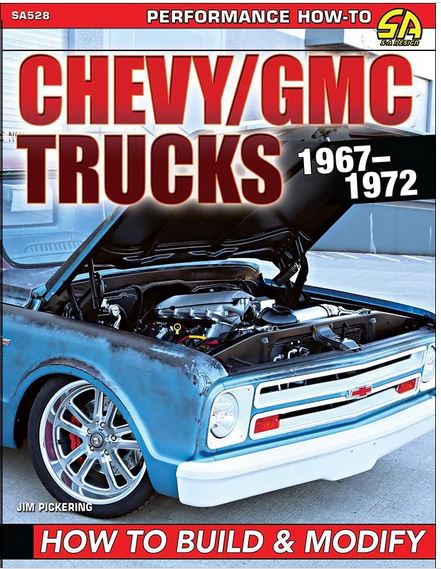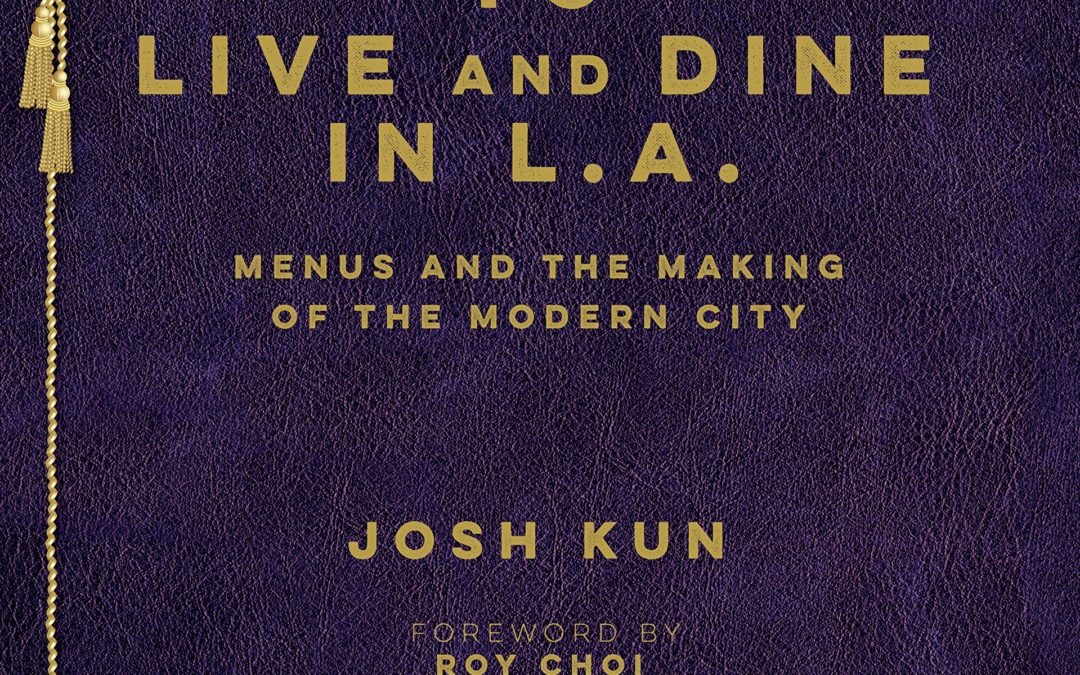
How did Los Angeles become the modern city the world watches? We know some of the answers all too well. Sunshine. Railroads. Hollywood. Freeways. But there’s another often overlooked but especially delicious and revealing factor: food.
Think veggie tacos and designer pizzas, hot dogs on sticks and burgers from golden arches, Cobb Salads and chocolate-topped ice cream sundaes, not to mention the healthiest dishes on the planet. Ask anyone who has eaten in L.A.–the city shapes the tastes that predict how America eats. And it always has.
In its fourth book collaboration with the Los Angeles Public Library and the Library Foundation of Los Angeles, Angel City Press releases To Live and Dine in L.A.: Menus and the Making of the Modern City by Josh Kun.With more than 200 menus–some dating back to the nineteenth century–culled from thousands in the Menu Collection of the Los Angeles Public Library, To Live and Dine in L.A. is a visual feast of a book.
But it’s more. Much more.
In his detailed history, author Josh Kun riffs on what the food of a foodie city says about place and time; how some people eat big while others go hungry, and what that says about the past and now. Kun turns to chefs and cultural observers for their take on modern: Chef Roy Choi sits down long enough to say why he writes “some weird-ass menus.” Pulitzer Prize-winning critic Jonathan Gold looks at food as theater, and museum curator Staci Steinberger considers the design of classic menus like Lawry’s. Restaurateur Bricia Lopez follows a Oaxacan menu into the heart of Koreatown.
The city’s leading chefs remix vintage menus with a 21st-century spin: Joachim Splichal, Nancy Silverton, Susan Feniger, Ricardo Diaz, Jazz Singsanong, Cynthia Hawkins, Micah Wexler, Ramiro Arvizu and Jaime Martin del Campo cook up the past with new flavors. And, of course, the menus delight: Tick Tock Tea Room, Brown Derby, Trumps, Slapsy Maxie’s, Don the Beachcomber, and scores more.
Kun tackles the timely and critically important topic of food justice, and shows how vintage menus teach us about more than just what’s tasty, and serve as guides to the politics, economics, and sociology of eating.
America is a dining-out nation, and our research indicates that L.A. has long been one of its top dining-out towns. The Library’s collection is a living repository of meals past, an archive of urban eating that tells us about the changing historical role of food in the city, which is to say it tells us about just about everything that food touches: economics, culture, taste, race, politics, architecture, class, design, industry, gender, to name just some of the themes that recur on menu pages.
Kun challenged contributors to tackle subjects that readers may have never contemplated. As the renowned L.A. chef Roy Choi points out in his Foreword to To Live and Dine in L.A.:
The more I looked at the menus, the more they told me about the city and how neighborhoods developed. But it was the menus that I couldn’t find that forced me to ask questions about how life really was. I started to think about how the city is now and if those missing menus were a reflection of life just as it is now. Were these menus of the affluent and middle-class? Were the working classes even eating with menus, or were they mostly eating at stands and carts? Were there disparities and access problems just like today? To Live and Dine in L.A. is the first book of its kind–the definitive way to read a menu for more than just what to order. It’s about how to live. And how to dine. In L.A.
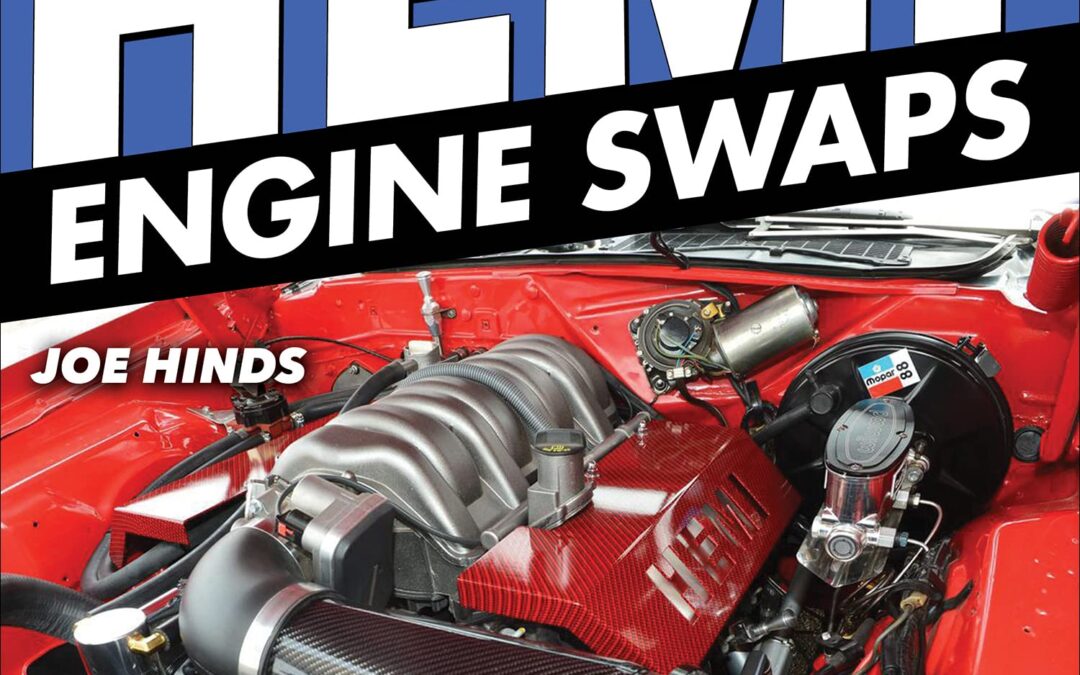
Have you made plans for a new Hemi swap into your classic car? Maybe you’re just curious about the process and want to know how much work is involved. Either way, New Hemi Engine Swaps: How to Swap 5.7L, 6.1L, 6.4L, and Hellcat Engines into Almost Anything has you covered!
Even casual enthusiasts are aware of how many people are swapping modern technology into vintage chassis. Successful LS swaps have been common for more than a decade. They seem to be everywhere among GM enthusiasts.
On the Mopar side, the new Hemi platform is now 20 years old, so plenty of salvage-yard cores are available. With the introduction of the new Hellcat in 2015 (as well as a more robust crate-engine program in recent years directly from Mopar), aftermarket manufacturers have recently seen the wisdom of making peripherals and parts to simplify the process of this swap. Suddenly, swapping a crate Hemi seems as achievable as an LS swap.
In New Hemi Engine Swaps: How to Swap 5.7L, 6.1L, 6.4L, and Hellcat Engines into Almost Anything, expert Joseph Hinds guides you through the process of turning your vintage ride into a modern street machine. The essentials are covered, including engine mounts, transmission cross members, headers that actually fit, and solutions for other common issues. Also covered are fuel-supply items (pumps and tanks) and engine-compatibility concerns (oil filter locations and oil-pan accommodations). Finally, the biggest concerns for most are the wiring, modern power train control modules (PCMs), computer controls, and fuel injection, all of which are covered here as well. There are even step-by-step instructions to fit a modern Hemi into an early-1970s-era Duster as well as a feature about programming aftermarket electronic fuel-injection (EFI) systems.
Now that the degree of difficulty in performing these swaps no longer requires a degree in computer science with welding certifications on the side, many are looking at their vintage Mopars in a new light. Whether you want to do this yourself, farm it out to a professional, or if you are just curious about how it is done, this is the guide for you.
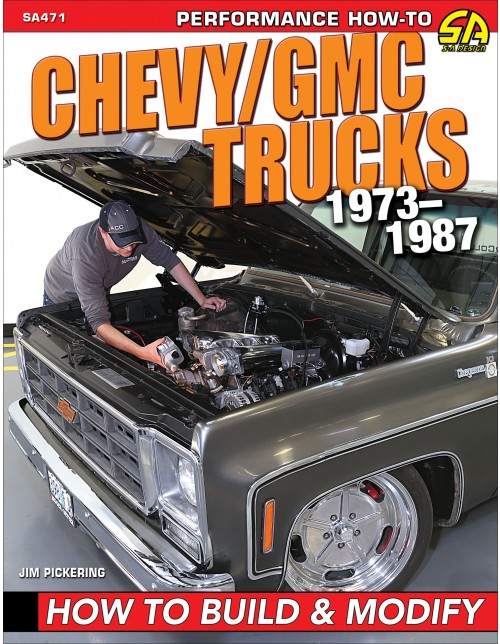
Build and modify your 1973-1987 GMC or Chevrolet truck in your garage with step-by-step processes to boost power, add curb appeal, and improve stopping ability, handling, safety, and more.
GM’s squarebody trucks are a solid, simple, and easy-to-find rig–and that makes them perfect for modification. They’re American classics, and they’ve become the hot rods of a new generation.
Veteran magazine editor Jim Pickering brings these trucks into focus, taking you through the aspects that make them so popular and modifications you can perform to put a modern spin on their classic looks. He takes an in-depth look at all the major systems in your Chevy truck and covers what can be done to them to turn your classic hauler into the modern hot rod that you want: a truck that’s fast, safe, full of curb appeal, and reliable enough to drive whenever and wherever you want.
Built in massive numbers during an 18-year production run, these trucks aren’t hard to source, but finding a good starting point and mapping out your plan are important. This book covers a lot of territory: how to find a good starter truck, LS-power builds and installs, slammed air suspension and coilover systems, automatic and manual transmission choices (including a 6-speed manual conversion), cooling system upgrades, safely adding a modern alternator to factory GM wiring, modifying a mechanical clutch pedal to use a hydraulic master and slave cylinder, making new fuel lines and brake lines to support fuel injection and big brakes, installing a 4-link rear suspension system, fabricating an under-bed mount to hide air suspension components, building exhaust, adding LED lighting, interior restoration, and more.
If you’re building a squarebody truck that you’d actually like to drive regularly, you’ve come to the right place. There hasn’t ever been a more comprehensive, authoritative look at building a complete truck for street use that includes all the steps required to make it work.
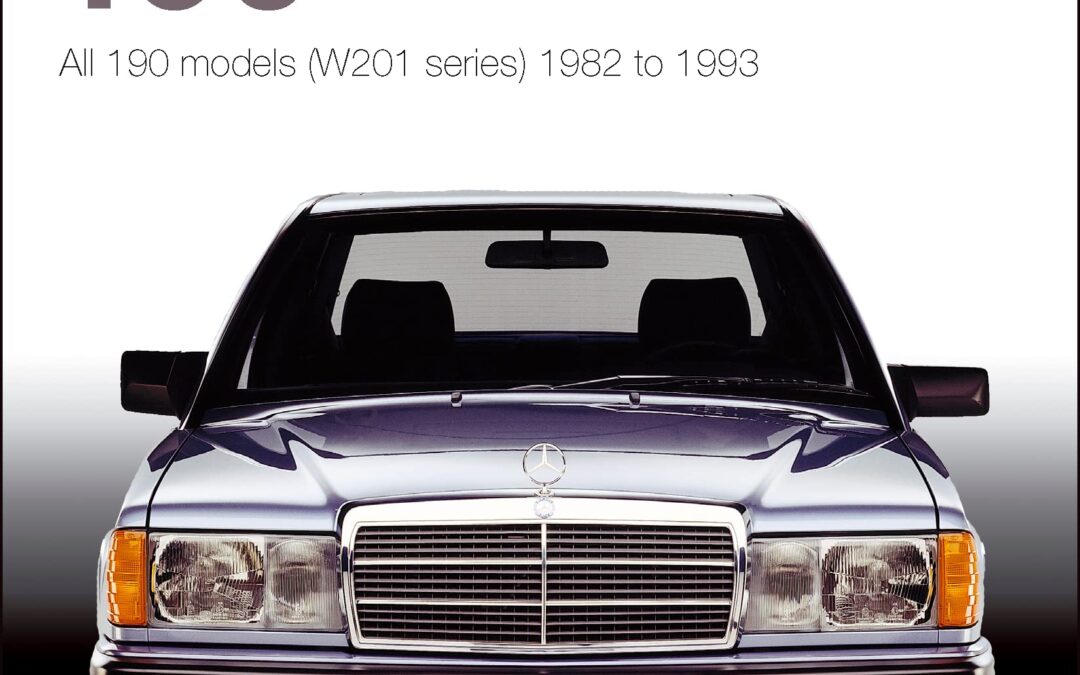
The 190 (W 201) was a landmark car for Mercedes-Benz: the predecessor to today’s C-Class models, it was the company’s first compact saloon (sedan) and combined advanced engineering with a new direction in body styling, later followed by the W124 and R129 series. Engines available included robust petrol and diesel ‘fours’, as well as a silky ‘straight-six’. The sporting 190 E 2.3-16 and 2.5-16 models, initially developed with Cosworth, took Mercedes to new levels of performance. Altogether, nearly 1.9 million cars were produced, and today the 190 is an increasingly sought-after modern classic. This guide will help you learn about the differences between models, and what to look for when buying. What are the true running costs, and what issues – with the mechanicals, body or interior – should you be wary of? Is a restoration worth considering? This handy guide will take you step-by-step through the process of finding and evaluating a good 190 and making a successful purchase. Essential data and information about clubs and specialists will help you look after and enjoy your 190.
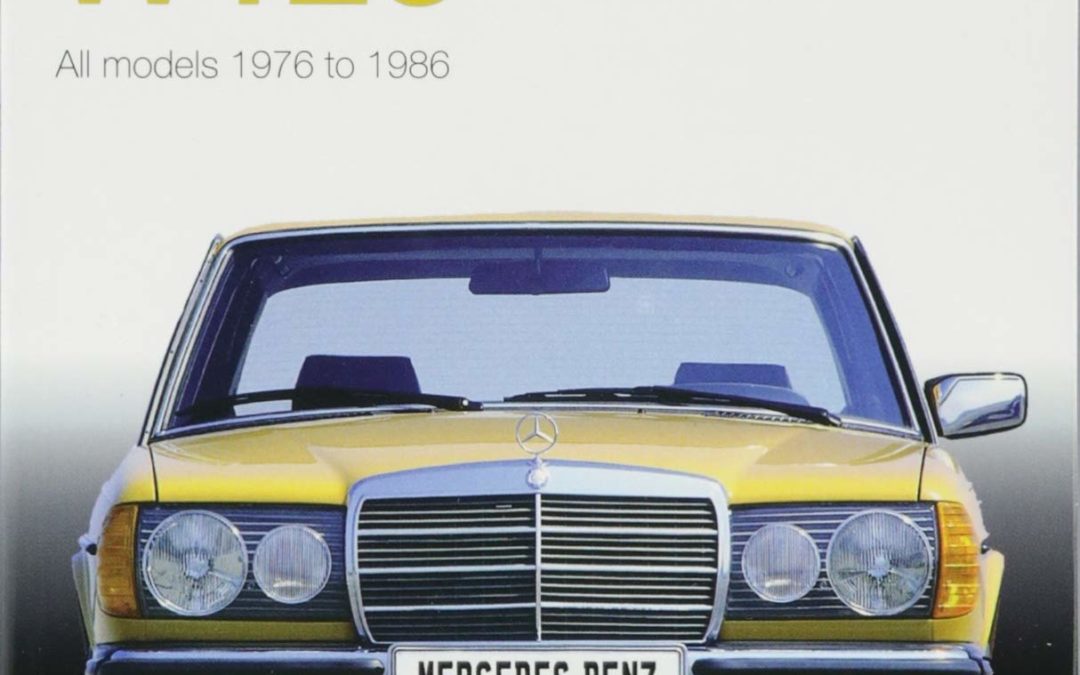
With nearly 2.7 million cars produced, Mercedes’ W123 series was hugely successful. As well as the practical saloon (sedan), Mercedes offered a stylish coupe and a roomy estate (wagon), which was built in-house for the first time. Often considered the marque’s best-engineered cars of all time, they are increasingly sought after as modern classics, yet many are still suitable to drive every day. From the taxi ranks of Germany to the dusty roads of North Africa, many of these cars have led a hard life, and examples in good condition are becoming ever more difficult to find.
This guide will help you learn about the differences between models, and what to look for when buying. What are the true running costs, and what issues – with the mechanicals, body or interior – should you be wary of? Is a restoration worth considering?
This handy guide will take you step-by-step through the process of finding and evaluating a good W123 and making a successful purchase. Essential data and information about clubs and specialists will help you look after and enjoy your W123 today.

Whether it’s a new Formula One V10 wailing at almost 20,000rpm or the metallic howl of a classic V12, there is nothing on earth like the sound of a racing car at full speed – and if it’s a bright red Ferrari screaming by flat-out, then so much the better.
“Red Noise” has been produced by broadcast audio specialists to bring those sounds right into your living room, your car or your stereo headphones. It utilises incredible recordings made in areas that the general public can never hope to reach….with microphones mounted on the trackside guard rails, and even from right inside the famous Monaco tunnel!
Listen to the sounds of Ferraris, Maseratis and Alfa Romeos spanning more than 75 years of motor racing history and featuring the world’s most famous Grand Prix cars.
This is a genuinely unique aural experience, so push the ‘play’ button, close your eyes and let your imagination and “Red Noise” take you right to the trackside.
Ferraris – Old and New1. See Red, Hear Red! The Vintage Sports Car Club stages an annual meeting at Donington Park that is themed around Italian racing cars. ‘See Red’ is the name of the VSCC meeting and we went there to give you the chance to ‘Hear Red’ ! First there’s the harsh engine notes of a 1980 Ferrari 312T5 ‘flat-12’ (a car actually driven by Gilles Villeneuve!) This is followed by an ex-Michael Schumacher team car from 2002 which we hear idling, picking up the revs, warming up, then finally pulling out of the pits with that distinctive V10 howl.
2. Monaco Ferrari Parade There was a fantastic gathering of Ferraris at the Monaco Historic Grand Prix in 2004. We were there to record all those incredible sounds! Cars ranged from the very first Type 125 1500cc supercharged GP car as driven by Alberto Ascari to a 21st-century Schumacher V10. In fact, there were no less than five vee-tens on hand – two Eddie Irvine cars from 1997 and three Schumacher cars from 1998/99 and 2000.
3. Picking up the Pace More from La Piscine as the real demonstration got under way and the cars picked up to racing speeds. No wonder the Italian commentator was getting excited!
4. Old and New in Action Old and new cars take La Piscine en masse. The field includes both four-cylinder and V12 cars from the ‘fifties, a 3-litre Type 312 V12 from 1968 and no less than seven Type 312 flat-twelve ‘boxer’ engine cars. From more recent times there were V12s as driven by Michele Alboreto in 1987, Nigel Mansell in 1990 and Alain Prost in 1991. And last, but very far from least, were the five Irvine and Schumacher vee-tens! They all mean music to the ears of the ‘Ferraristi’….
5. More from Monaco More ‘red noise’ from the Monaco 2004 Ferrari tribute high-speed demonstration laps. Similar to the previous tracks but too good to waste – especially as we were recording with microphones actually right on the Monaco trackside guard rails!
6. Flat-Out Red! And now for a change of recording point – here are Ferraris- old and new – passing at speed on the Monaco start/finish straight.
7. Generations Apart A 1999 ex-Schumacher Ferrari V10 takes La Piscine in conjunction with a rear-engined Ferrari 246 ‘Dino’ V6 that Italy’s Lorenzo Bandini took to second place here at Monaco in 1966. Then comes a 2.5 litre Ferrari Type 625 – the car that Frenchman, Maurice Trintignant, won Monaco with in 1955. The old front-engined ‘four’ takes La Piscine in conjunction with another modern Ferrari V10.
8. The Ferrari Type 312 V12 Sit back and listen to the first Ferrari Type 312 warming up and blasting through the Monaco tunnel.
9. Jackie Ickx Remembers Belgian Grand Prix and Le Mans star, Jackie Ickx, was a young Ferrari driver in the early nineteen-seventies. He remembers those times for us and tells us what it was like to race at Monaco back then.
10. Flat-Twelve Ferraris Not until Ferrari re-designed its 3-litre V12 did they start scoring World Championship successes again. It powered Niki Lauda to world titles in 1975 and 1977, as well as Jody Scheckter in 1979. The engine had a distinctly harsh note. We hear it warming up at Monaco, then making several echoing passes through the Monaco tunnel and, finally, negotiating the La Piscine sequence of tight turns.
11. The ‘Other Flat-Twelve’ There was another ‘flat-twelve’ built in Italy during the seventies, this one by the Alfa Romeo team in Milan. This is what that car would have sounded like back then, warming up and then blasting off, flat-out.
12. The Last F1 Vee-Twelves Ferrari stuck with V12 engine power right through the mid-nineties with Frenchman, Jean Alesi and Austria’s Gerhardt Berger driving the Type 412 team cars until the end of the 1995 season. By then, it was obvious that the V10 layout was definitely the most efficient of all of the Formula One options. Even so, the heavier, longer V12 took the 412 to a number of GP wins – and it sounded great in the process!
13. Into the 21st Century This is the unmistakable sound of V10-powered Ferraris howling by our microphones on the trackside barriers. First we hear some individual passes, then a whole group of vee-tens finish the track. These are all cars driven by either Michael Schumacher or Eddie Irvine between 1997 and 2000.
Maserati from Modena
14. Vintage Red Maserati is one of the oldest names in motorsport. Listen to a couple of vintage Maserati racers warming up – a four-cylinder 4CLM from 1939 and a six-cylinder 6CM from the 1937 season. These supercharged 1500cc cars would have raced in the ‘voiturette’ class – the nineteen-thirties equivalent of the Formula Two (or GP2) category.
15. A Fifties Favourite The six-cylinder Maserati 250F was one of the favourite 2.5 litre Formula One cars of the fifties – both with the fans and with its drivers. Listen to a group of them fire up, pull out of pits and then pass by on a flying lap.
16. Maseratis En Masse! A full field of twenty cars in a ‘Maserati-only’ race at the Vintage Sports Car Club’s ‘See Red’ event at Donington Park. They range from pre-war four, six and eight-cylinder supercharged cars to a whole pack of what is one of the most-admired Grand Prix cars of all time, the six-cylinder Maserati 250F. Hear them on the parade lap, and in race action through Redgate Corner.
17. Maserati at Monaco The throaty sound of a six-cylinder Maserati 250F as it warms up, followed by the rumble and the roar of a full field of ‘fifties Formula One cars on their warm-up lap.
18. Monaco Shark Hunt! The three-pronged trident is famous as the weapon of Neptune, or Poseidon – the God of the Sea and it has also always been the emblem of Maserati. So it’s perhaps appropriate that we hear a pack of 250F Maseratis chasing a Ferrari Type 555 ‘Squalo’ – or ‘Shark’ through the tight left-hander before Monaco’s Rascasse hairpin.
19. GP Rivals Warm Up A Bugatti Type 35 warms up in the Monaco pits. It carries the racing blue of France where the cars were built. Then an Alfa Romeo P3 is push-started into life and joins the mechanical chorus.
20. Right on the Rail! A full field of more than thirty great cars of ‘the golden age’ rumble around on a warm-up lap, take the start and attack the opening laps of a race around the Monaco streets. You are right up with the action thanks to our stereo microphones positioned right on the trackside safety barriers.
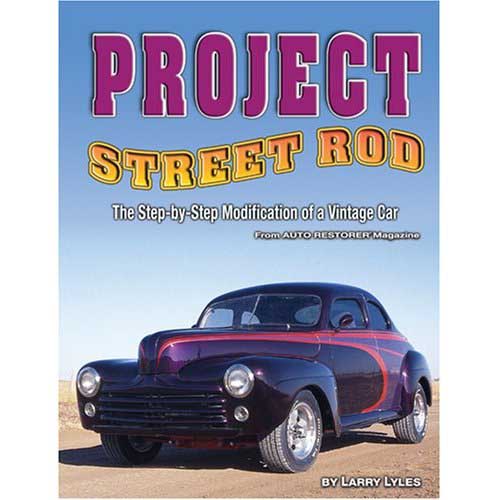
Project Street Rod is a complete guide to restoring a vintage car, written by auto-restoration guru Larry Lyles, a regular contributor to Auto Restorer magazine. In this detailed 21-chapter volume, Lyles walks the car owner through every step of the modification, from the disassembly of the car and to the finish touches, all with detailed instructions. Lyles transforms a beat-up 1946 Ford into a car the “looks nice, is very dependable, and is decked out with many of the [necessary] modern-day trappings.”
The title of each chapter is straightforward and tells the restorer exactly which step Lyles is explaining. The contents includes: beginning the disassembly, exterior and interior, and taking proper measurements of each component; installing the front suspension; installing the engine; shocks, spring and metal lines; floor pan installation, “suicide” doors, chopping the top, completing the top chop, seats, air-conditioning, and brake pedal; first project mock-up; working with body filler; color selection; new parts and fresh primer; ordering critical parts; the final clear coats; buildup; interior trim; headliner and center console; and finishing touches.
Each step in every chapter is photographed as the author progresses along, with captions to spell out exactly what has to happen. The book offers helpful advice about choice of tools and tips to make even beginners feel confident about tackling the many steps involved. With nearly forty years experience in repairing, rebuilding, and restoring classic cars (areetnd lots of unclassic ones like this 1946 Ford!), Lyles emphasizes the reader’s need to organize his or her project by determining the course of the project, researching suppliers, making lists of parts and their conditions, creating spreadsheets of estimated and actual costs, and photographing each component as a reference for later in case the restoration goes off track. Each chapter ends with a “notes” page for the reader to record his or her progress, making this manual a practical workbook as well. When the reader gets to the final pages of the book and reads the sections “Starting Up” and “The Walk Around,” there will be a true sense of accomplishment. An appendix of part suppliers and an index complete the book.
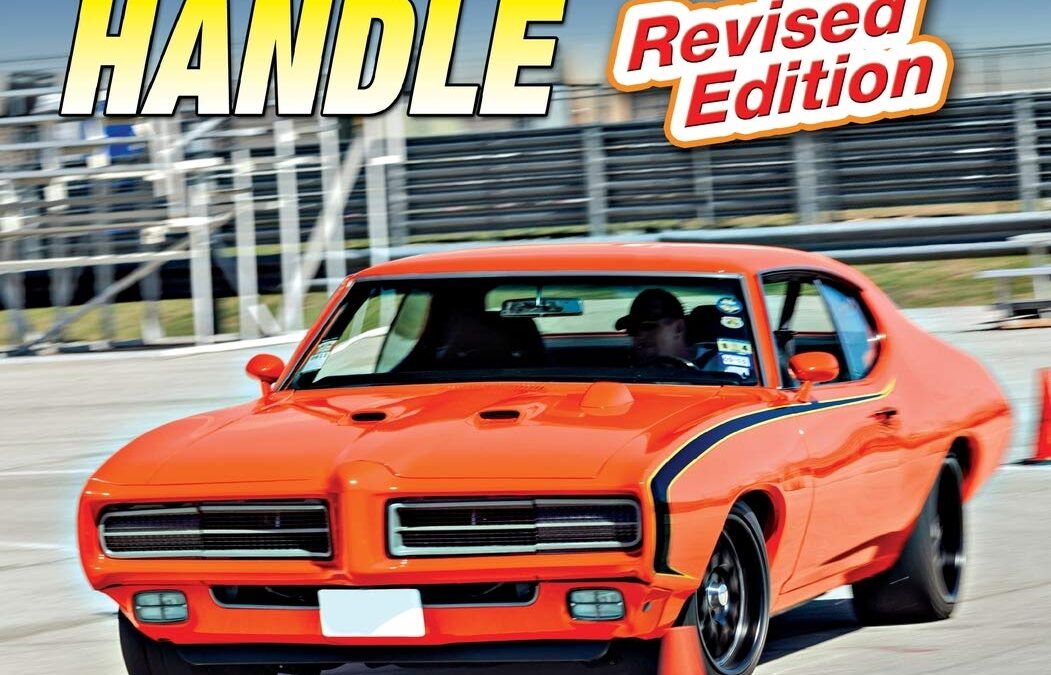
When automotive manufacturers stuffed large V-8 engines into intermediate-size cars, the American muscle car was born. Built from 1964 on, the vast majority of these amazingly fast machines did not carry cutting-edge chassis and suspension systems, and now these cars are up to 50 years old. Today, owners do not have to settle for poor handling and ride quality.
Muscle car and suspension expert Mark Savitske has built his business, Savitske Classic and Custom, on making muscle cars handle and ride at their best. With this updated edition, Savitske shows you what it takes to transform the handling of these high-horsepower machines. He explains the front and rear suspension geometry so you understand how it functions, and in turn, you realize how to get the most from a particular system. He also reveals the important aspects of spring rates, shock dampening, and ride height so you select the best spring and shock package for your car and application. He discusses popular high-performance tubular suspension arms and sway bars, so you can find the right combination of performance and adjustability. The suspension system has to operate as an integrated part of the car, so you’re shown how to select best suspension package for a well-balanced and responsive car. He also discusses how to extract maximum performance from popular GM, Ford, and Mopar muscle cars.
You can harness the performance potential of your muscle car and put much more power to the ground with critical chassis and suspension updates and products. A muscle car that carries modern suspension technology not only provides far better handling and ride comfort, but it is also much safer. How to Make Your Muscle Car Handle is the essential guide to unlocking the handling and performance potential of your muscle car. If you yearn for better handling, comfort, and performance for your muscle car, this is the book for you.
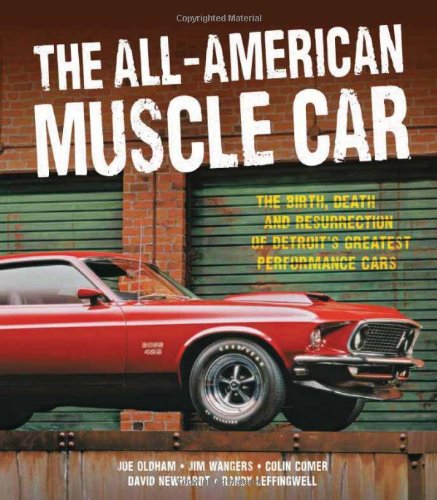
The birth of the muscle car, mid-sized cars with big engines making big horsepower, marked not only a revolution in performance—but also a revolution in marketing. For the first time ever, car manufacturers tailored their product to a youth audience. The genre thrived in the 60s and early 70s and was reborn in the 21st century. The All-American Muscle Car celebrates the fifty-year history of the breed through stunning modern and archival photography, and brilliant essays from today’s top muscle-car writers. Organized by themes, its chapters cover the introduction and early years of muscle; the cultural trends that made muscle cars so wildly popular; the pop culture that surrounded the cars in music, film, and television; and racing, both legal and illegal. Great rivalries are detailed—Camaro versus Mustang versus Firebird versus Challenger versus ‘Cuda, GTO versus Road Runner versus Super Bee versus Chevelle SS versus Buick Gran Sport versus Oldsmobile 4-4-2, and the like. The book also explores the illogical extremes at the end of the classic era, the Plymouth Superbirds, GTOJudges, LS6 Chevelles, Hemi ‘Cudas, W-30 Oldsmobiles, Ram Air IV Pontiacs, Stage I GSX Buicks, and 440/6 Road Runners; the dark years and the death of performance; the rebirth of the muscle car; and the modern interpretations of the breed including the new Camaro, Mustang, and Challenger.
Hard Cover
1st Edition
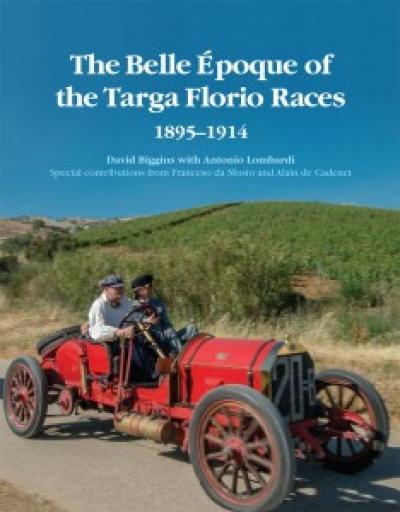
“The Belle Epoque (The Beautiful Age) coincides with the period of Edwardian extravagance so well depicted in the now famous TV series “Downton Abbey”. During this era, at the turn of the 20th century, Paris was the epicentre of fashion and art , London of society and class, Vienna of intellectual activity. New York’s own golden age was based on money, that classic American value!
There was an ebullient atmosphere everywhere , decadent and magnificent at the same time, coinciding with the momentous changes brought by modern inventions including wireless communication, the automobile, and the airplane. The privileged and moneyed classes enjoyed lives of extravagant luxury in sharp contrast to the desperate lives of the under classes, urban and rural. This contrast was even more evident in Sicily, where so many still endured medieval conditions. Palermo was one of Europe’s capitals of the period, visited regularly by royalty including the Czar of Russia and Germany’s Kaiser.
During those same years Vincenzo Florio, scion of Sicily’s leading family, created his eponymous race, the Targa Florio. He was only 23 when its first edition took place in 1906, but the honor committee included the presidents of the Automobile Clubs of the United Kingdom, France and Germany. Florio intended Sicily to be at the center of the blossoming new world of auto racing . He succeeded beyond his wildest dreams, and his story is being made into a movie titled ” Pistons, Passions & Sicilian Pleasures”. It will recount the early life of Vincenzo Florio and his friend and protege Felice Nazzaro, destined to become one of the greatest drivers of all time.
As a prelude to the release of the film, Upfolds Publishing announces the publication of the companion book..
The book narrates the experience of making this film. It is rich in illustration both historical and modern. The photographic artist Becca Parker captures both the beautiful landscapes of Sicily and the excitement of one hundred year old racing cars, reliving the passions of the Targa Florio, the oldest race in the world.
The book is a hard covered coffee table style in high definition.
“
Autobooks-Aerobooks 2900 W. Magnolia Blvd. Burbank, CA 91505 (818) 845-0707 Hours: Tuesday-Friday 10:00 AM – 6:00 PM Saturday 10:00 AM – 6:00 PM Closed Sunday and Monday Accept Credit Cards gift cardYES, We have Gift Cards - Click Here AUTOBOOKS IS OPEN...



